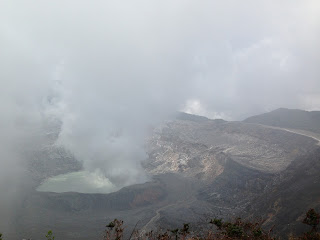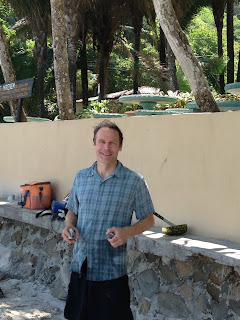 The Encinitas Sprint Tri was this weekend....a special race for me as it was my first real triathlon 6 years ago. I had done one other and they cancelled the swim ( so that does not count) There were big waves 6 years ago but not as big as yesterday. 4-6 feet and it did not let up. Thank you for NOT cancelling the swim.
The Encinitas Sprint Tri was this weekend....a special race for me as it was my first real triathlon 6 years ago. I had done one other and they cancelled the swim ( so that does not count) There were big waves 6 years ago but not as big as yesterday. 4-6 feet and it did not let up. Thank you for NOT cancelling the swim. |
| Yea Liz conquered the swim |
This is as good as it gets for a swimmer! But I was so impressed by so many who embraced their fears and toed the line. They went for it and a lot of them make it out...and back in. Some did not, but they tried it and were still able to do the Duathlon. It was hard and scary. I got slammed hard coming in, full body tumble, goggles off, hit the sand....The adrenaline was high!
 |
| Nytro girls (missing Kristin) |
The run was short and fast and I felt great.... the bike albeit short was just painful. My legs are shot from CrossFit and lack of riding. I have been running every day minimum 30 minutes and I can see how it pays off...I am used to running tired and sore and my legs know know how to respond.
 |
| HERevolution team + me - Rockstars who also braved and conquered! |
 CrossFit and endurance training is NOT easy and most simply quit- as would I if I had a key race or racing season. But I am committed to 3 days a week...that means my biking and running suffers. I am experimenting with 3 days in a row and then hoping my legs will loosen up for the weekend for some longer rides but last week that did not work out so well due to being sick, And I am traveling early this week- so will take in in stride.... what I want to see is if the CrossFit strength will pay off when it comes time to race... even though my running and riding is compromised. I have to increase volume or Vineman will not be doable and I will just have to keep it slow and see. If it fails, it fails...but I will have tried it. I absolutely love it- love the muscle confusion, the energy and the sheer physical abuse....
CrossFit and endurance training is NOT easy and most simply quit- as would I if I had a key race or racing season. But I am committed to 3 days a week...that means my biking and running suffers. I am experimenting with 3 days in a row and then hoping my legs will loosen up for the weekend for some longer rides but last week that did not work out so well due to being sick, And I am traveling early this week- so will take in in stride.... what I want to see is if the CrossFit strength will pay off when it comes time to race... even though my running and riding is compromised. I have to increase volume or Vineman will not be doable and I will just have to keep it slow and see. If it fails, it fails...but I will have tried it. I absolutely love it- love the muscle confusion, the energy and the sheer physical abuse.....jpg)
.jpg)











.jpg)










